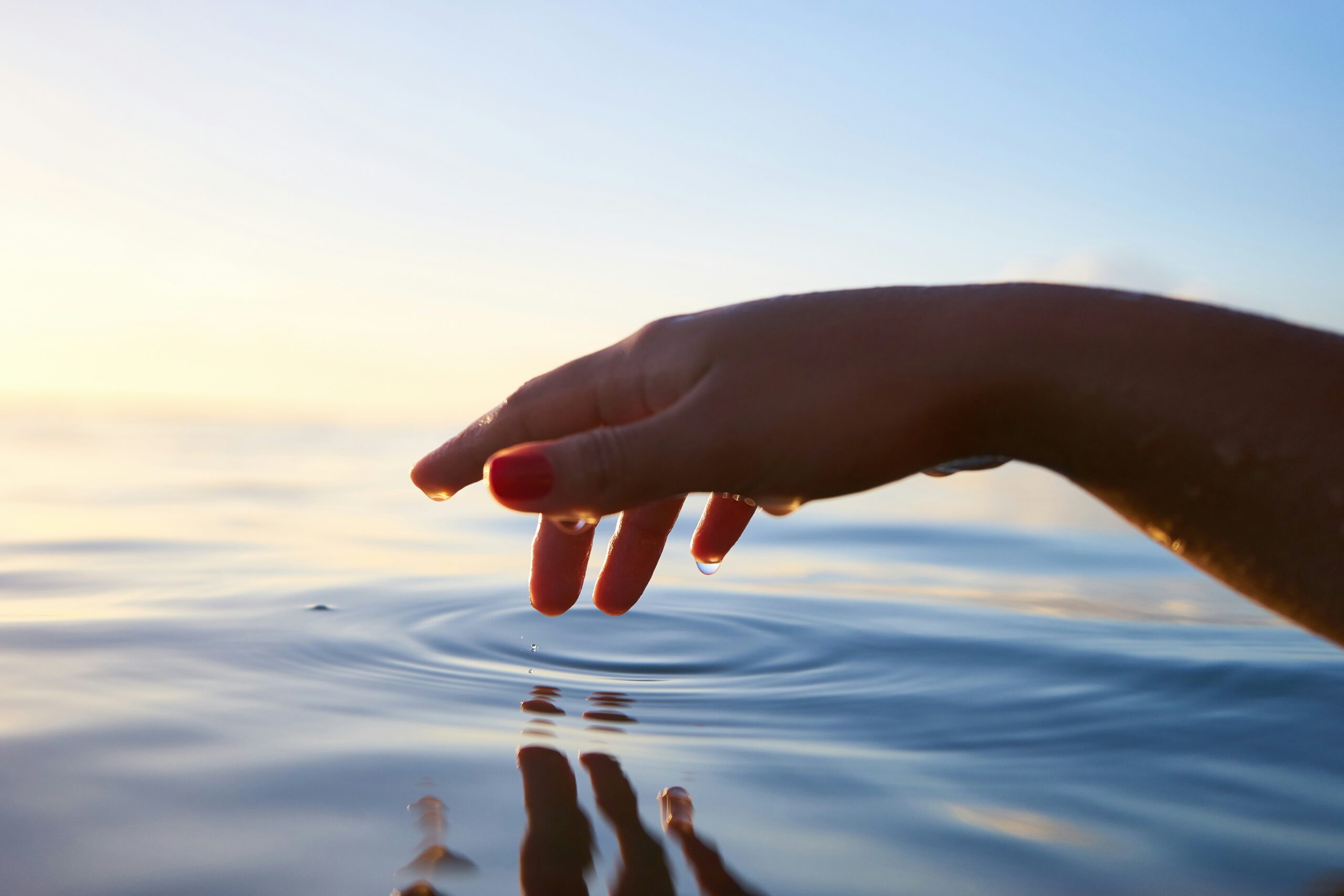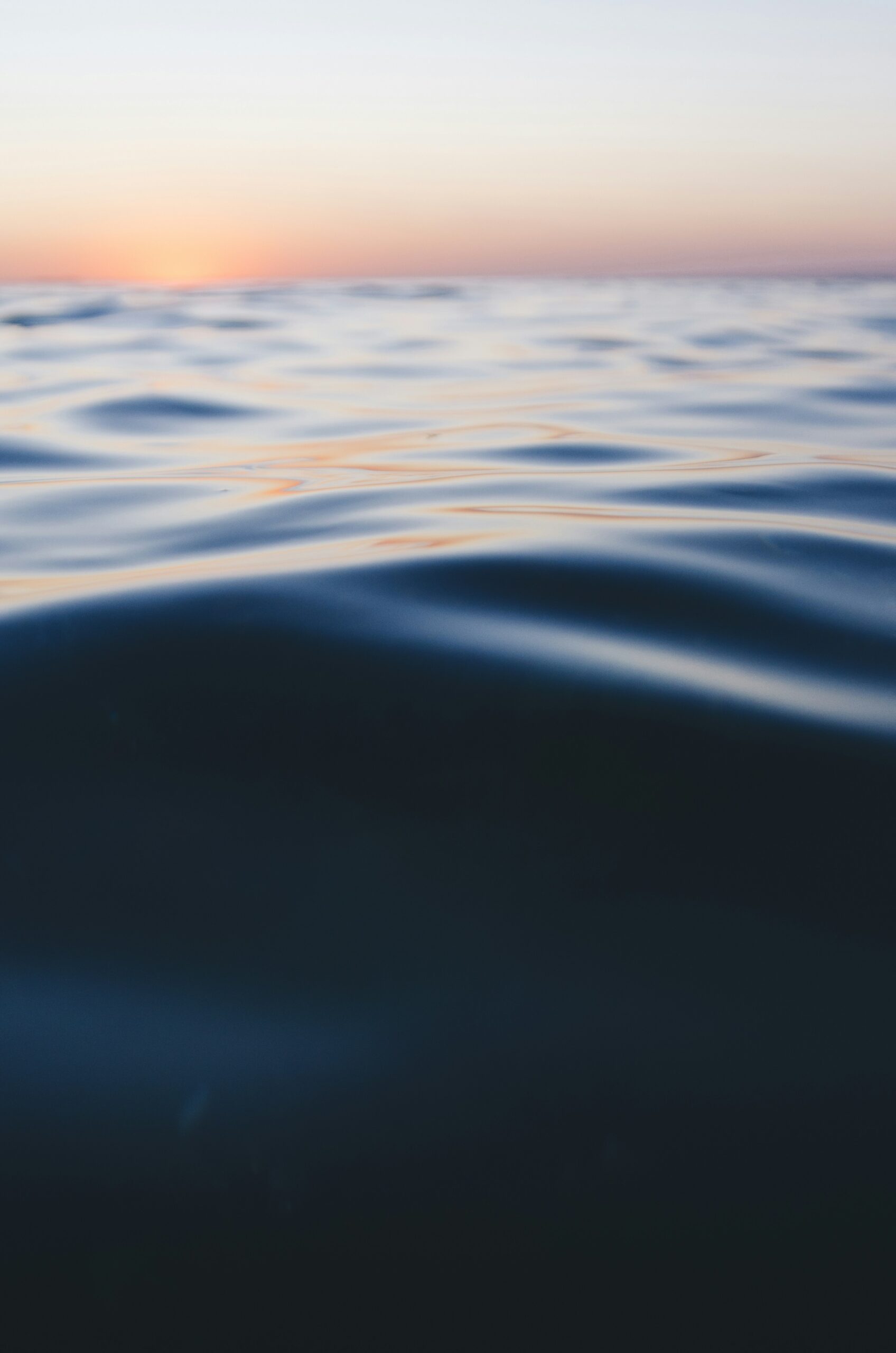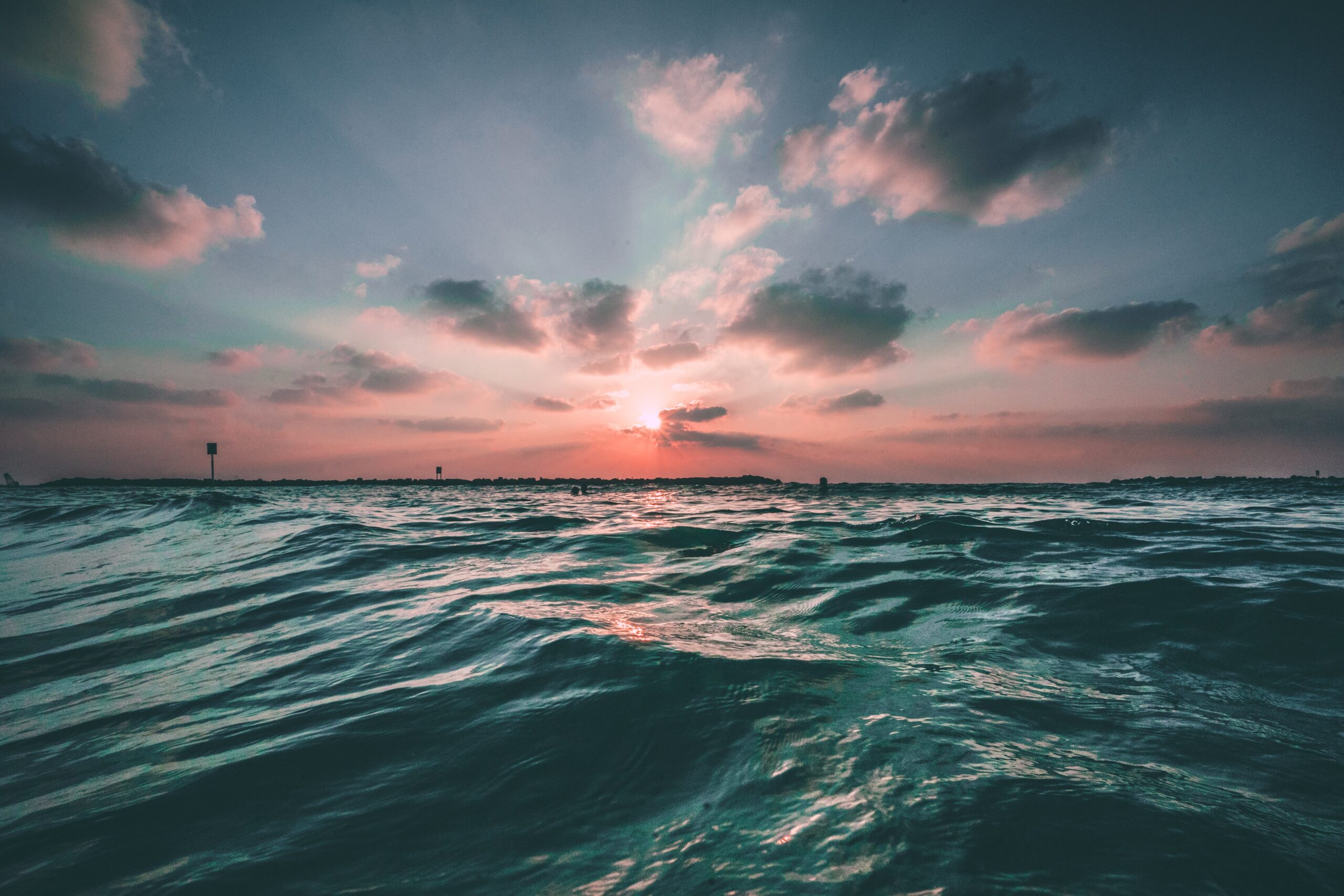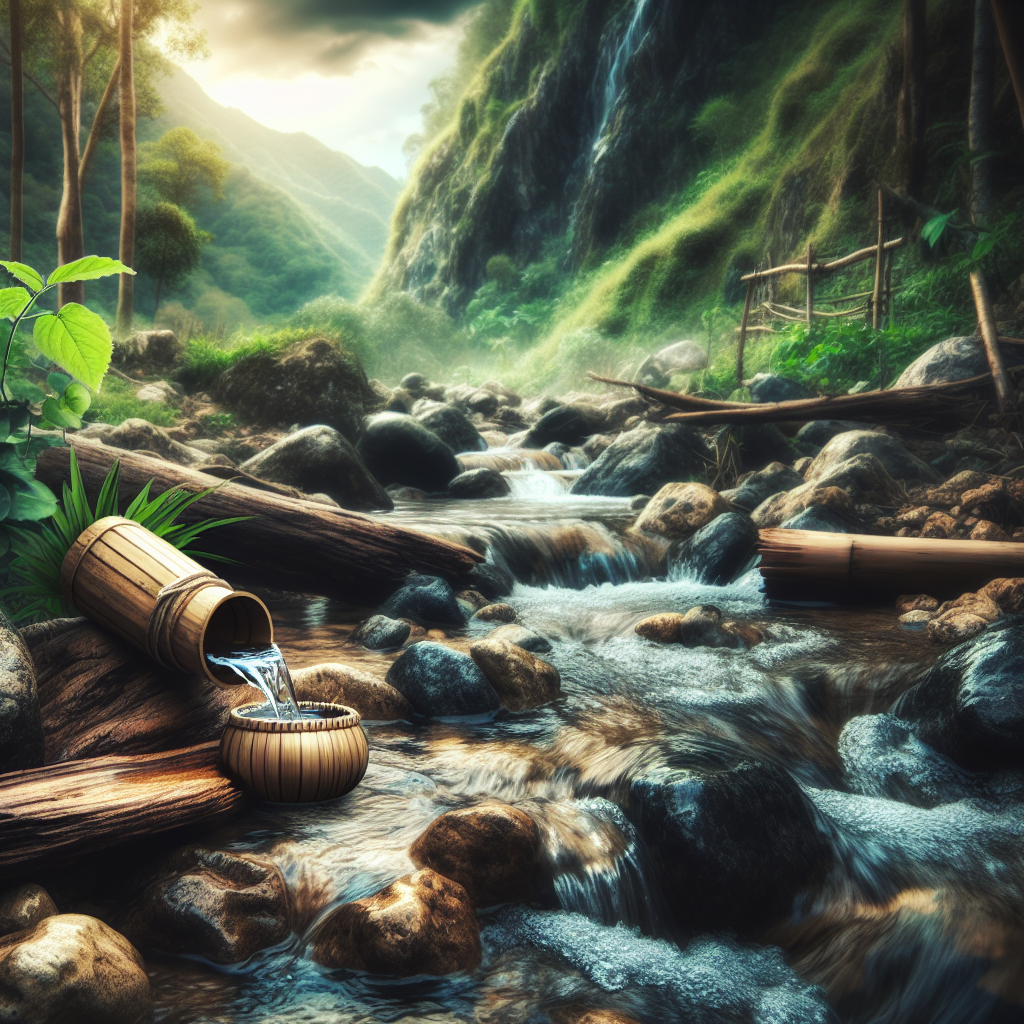In the vast wilderness, where nature thrives and adventures await, the ability to find and store water becomes a crucial skill for survival. Whether you are an experienced explorer or someone venturing into the great outdoors for the first time, knowing how to locate and secure water sources is paramount. This article will provide you with essential tips on finding and storing water in nature, ensuring that you stay hydrated and prepared during your time in the wilderness. So grab your gear, embark on this insightful journey, and equip yourself with the knowledge to quench your thirst wherever your expeditions may take you.
Importance of Water in Survival Situations
Water is essential for survival in any situation, and this is particularly true in survival scenarios. As a basic necessity, water is crucial for maintaining bodily functions and preventing dehydration, which can lead to serious health complications. In addition to hydration, water also plays a vital role in cooling the body, especially in hot and arid environments. Moreover, water is essential for cleaning wounds and cooking food, both of which are critical for maintaining good health and well-being.
Water as a Basic Necessity
Water is an absolute necessity for human survival. Without it, our bodies cannot function properly, leading to dehydration and a host of other health problems. When faced with a survival situation, ensuring access to safe drinking water becomes a top priority. Without clean water, dehydration can quickly set in, leading to weakness, dizziness, and diminished cognitive function. This can make it difficult to carry out essential survival tasks and may even put your life at risk. Thus, understanding how to find and store water is of utmost importance.
Water for Hydration and Cooling
In survival situations, maintaining proper hydration is crucial for sustaining your physical abilities and mental clarity. Without enough water, your body’s performance can decline rapidly, making it harder to carry out essential tasks such as finding shelter, gathering food, and navigating your surroundings. Additionally, in hot and arid environments, water is essential for cooling your body and preventing heat-related illnesses. By staying hydrated and using water to cool yourself, you can increase your chances of survival in challenging conditions.
Water for Cleaning and Cooking
While hydration and cooling are top priorities when it comes to water in survival situations, water also serves other important purposes. Clean water is necessary for cleaning wounds to prevent infection and promote healing. In survival scenarios where access to medical care may be limited, properly cleaning wounds becomes even more crucial. Additionally, water is needed for cooking, allowing you to prepare food and ensure proper nutrition. Cooking also helps kill any potential pathogens present in the food, making it safer to consume.
Understanding Water Sources in Nature
In nature, there are various sources of water that can be utilized in survival situations. Identifying these sources is key to ensuring your water needs are met. Common natural water sources include rivers, streams, lakes, ponds, and even rainwater. Evaluating the suitability of these sources is crucial before deciding on the best method to collect and use the water.
Identifying Natural Water Sources
Being able to identify natural water sources is a vital skill for survival. Look for signs such as flowing water, vegetation growth, and animal tracks that can indicate the presence of water nearby. Additionally, keep an eye out for topographic features such as valleys, depressions, and low-lying areas, as these tend to collect water. By being observant and knowledgeable about the surroundings, it becomes easier to pinpoint potential water sources.

Evaluating the Suitability of Water Sources
Not all water sources are safe for consumption. It is important to evaluate the suitability of each water source before using it. Look for clear water, as turbid or colored water may contain contaminants. Avoid stagnant water, as it is more likely to be contaminated with bacteria and parasites. Consider the proximity of potential pollution sources such as animal habitats or human activity, as these can introduce harmful substances into the water. By carefully evaluating each water source, you can reduce the risk of consuming contaminated water.
Types of Natural Water Sources
Natural water sources come in various forms, each with its own unique characteristics. Rivers and streams provide moving water, which is generally safer to drink than stagnant water. Lakes and ponds can also be viable water sources, but it is important to consider their size and surrounding environment. Rainwater collected during rainfall can be an excellent source of water, especially if it is captured in clean containers. By understanding the different types of natural water sources, you can make informed decisions on which ones to utilize in a survival situation.
Methods to Collect Water from Natural Sources
Knowing how to collect water from natural sources is essential in survival scenarios where clean water may be scarce. There are several effective methods for collecting water, including rainwater collection, collecting water from rivers and streams, and digging for underground water.
Rainwater Collection
Rainwater is a valuable source of fresh water in many environments. You can collect rainwater by placing containers such as buckets or tarps to capture rainfall. If possible, position these containers under a natural funnel point, such as a tree or the corner of a building, to maximize collection. It is important to ensure that the containers used for rainwater collection are clean and free from any contaminants that may leach into the water.
Collecting Water from Rivers and Streams
Rivers and streams can often provide a reliable source of water when other options are limited. To collect water from these sources, find a spot downstream where the water is flowing smoothly rather than from a turbulent area. Use a clean container, such as a water bottle or pot, to scoop up the water. Be cautious of any potential contaminants or hazards in the water, such as debris or dead animals. If the water appears cloudy or has a suspicious odor, it is best to filter and purify it before consumption.
Digging for Underground Water
In some cases, underground water can be accessed by digging. Look for signs of vegetation or damp ground, as these may indicate the presence of an underground water source. Use a shovel or other suitable tool to dig a hole deep enough to reach the water table. Once you have reached the water, carefully scoop it up with a container or use a cloth to filter out any solids before drinking. It is important to note that water collected in this manner may still need to be treated or purified before consumption.

Water Purification Techniques in Nature
Even when water is available in nature, it may still contain harmful bacteria, parasites, or other contaminants. knowing how to purify water using natural techniques is essential for ensuring its safety.
Boiling Water
Boiling water is one of the most effective methods for killing harmful microorganisms. To purify water through boiling, bring it to a rolling boil and maintain the boil for at least one minute. In high-altitude regions, water should be boiled for a longer duration to compensate for the lower boiling point. Let the water cool before consumption. Boiled water may have a flat taste, so pouring it back and forth between containers can help restore its oxygen content and improve the taste.
Using Purification Tablets
Purification tablets are compact and convenient water treatment options that can kill bacteria and other harmful organisms. Follow the instructions provided with the tablets to ensure proper usage. Generally, a tablet is added to a specified volume of water and allowed to dissolve completely. After an appropriate waiting period, the water is safe to drink. It is important to note that purification tablets may not effectively remove certain chemicals or heavy metals from the water.
Improvised Water Filters
If no purification tablets or commercial filters are available, you can create an improvised water filter in nature. Start by filtering the water through a cloth or piece of clothing to remove any large debris. Next, create a filter using layers of sand, charcoal, and small rocks in a container such as a plastic bottle. Pour the water through the improvised filter, collecting it in a separate clean container. This method helps remove sediment, bacteria, and certain parasites from the water, but it may not eliminate all contaminants.
Building Water Storage Solutions in Nature
In survival situations, water storage is just as important as finding a regular supply. creating natural water reservoirs, constructing water containers from natural materials, and utilizing existing water storage features can ensure a steady supply of water.
Creating Natural Water Reservoirs
If you find a natural depression, such as a rock basin or a concave area in the ground, you can transform it into a makeshift water reservoir. Line the depression with a waterproof material, such as a tarp or large leaves, to prevent water from seeping into the ground. This will help retain the rainwater or other water sources, creating a small storage pool for future use.

Constructing Water Containers from Natural Materials
When you do not have access to traditional containers, you can fashion makeshift water containers from natural materials. Hollowed-out bamboo stalks or large leaves can serve as effective containers for storing water. It is important to ensure that the materials used are clean and free of contaminants that may leach into the water. Secure the containers to prevent leakage and place them in a shaded area to reduce evaporation.
Utilizing Existing Water Storage Features
In certain environments, such as desert or mountain regions, there may be existing water storage features that can be utilized. Look for natural depressions in rocks, crevices, or even tree hollows that can hold water. Similarly, explore the area for man-made structures, such as abandoned wells or cisterns, that could offer a viable water source. Utilizing these existing water storage features can save time and energy in collecting and storing water.
Tips for Efficient Water Usage during Survival
During survival situations, making the most of limited water resources is crucial. Prioritizing water needs, conserving water through hygiene practices, and practicing effective rationing and portion control can all contribute to efficient water usage.
Prioritizing Water Needs
It is important to prioritize your water needs to ensure that essential tasks are accomplished. Drinking water should always be the top priority, followed by hygiene and medical needs. Once these basic needs are met, consider other uses such as cooking or cleaning. By prioritizing your water usage, you can ensure that your immediate needs are met while minimizing waste.
Conserving Water through Hygiene Practices
In survival situations, practicing good hygiene is essential for preventing illness and conserving water. Opt for quick sponge baths or wipe downs instead of full body washes. Use minimal amounts of water when brushing your teeth, and consider using mouthwash or chewing gum as an alternative. Additionally, adopt water-saving techniques when washing dishes, such as using a small basin or washing them directly in running water to avoid excessive waste.
Effective Rationing and Portion Control
When water is scarce, it is essential to ration your supply and practice portion control. Avoid excessive drinking, as it can lead to unnecessary waste and result in dehydration from lack of water later on. Instead, drink small sips at regular intervals to stay hydrated without depleting your water supply too quickly. Similarly, when cooking, use the minimum amount of water necessary to prepare meals, and avoid leaving the tap running while performing other tasks.

Avoiding Contaminated Water in Nature
Identifying potential water contaminants, methods to detect water quality, and avoiding waterborne illnesses are critical for staying healthy in survival situations.
Identifying Potential Water Contaminants
Water sources in nature can contain various contaminants that pose a health risk. These contaminants may include bacteria, parasites, viruses, chemicals, or heavy metals. They can be introduced into the water through industrial pollution, animal waste, or human activities. Being aware of potential contaminants and understanding their sources can help you avoid consuming contaminated water.
Methods to Detect Water Quality
While visual inspection of water can provide some clues about its quality, it is often insufficient to determine contamination accurately. One of the simplest methods to assess water quality is to use your senses. Observe the color, clarity, and smell of the water. If it appears cloudy, has an unpleasant odor, or tastes unusual, it may indicate contamination. However, to obtain a more accurate assessment of water quality, you can use portable water testing kits that detect various contaminants, including bacteria and chemicals.
Avoiding Waterborne Illnesses
Waterborne illnesses can be a significant threat in survival situations. To avoid falling ill, it is essential to treat or purify all water before consumption. Even if the water appears clean, it may still contain harmful microorganisms that are not visible to the naked eye. By boiling, using purification tablets, or filtering the water, you can significantly reduce the risk of contracting waterborne illnesses. Additionally, practicing good hygiene and avoiding prolonged contact with potentially contaminated water sources can further minimize the risk.
Adapting Water Collection Techniques for Different Environments
Different environments require specific approaches to finding and collecting water. In desert environments, rivers and underground water sources may be scarce, making rainwater and moisture collection techniques crucial. In forest environments, rivers, streams, and natural springs may be abundant but require careful evaluation for potential contamination. In mountain and alpine environments, snow and glacier meltwater can serve as viable water sources.
Desert Environments
In desert environments, finding water can be particularly challenging due to the arid conditions. Rainwater becomes a precious resource, and collecting it should be a priority. Set up rainwater collection systems using tarps or large containers to capture rainfall. Additionally, take advantage of dew or condensation that forms overnight on plants or natural rock formations. Collecting these moisture sources can provide a vital supply of water in these harsh environments.
Forest Environments
Forest environments often offer a wealth of water sources, including rivers, streams, and natural springs. However, it is important to evaluate these sources carefully for potential contamination. Be mindful of any upstream human activity, such as campgrounds or logging areas, which can introduce pollutants into the water. Additionally, consider using natural filtration methods, such as passing the water through layers of rocks or sand, to remove any sediment or impurities.
Mountain and Alpine Environments
Mountain and alpine environments often rely on snow and glacier meltwater as the main water sources. These sources may be abundant, but they require careful collection and purification. Collect snow by scooping it into a container and allowing it to melt naturally, or melt it over a fire or stove. Take caution when melting snow or glacier ice, as it could contain impurities from environmental factors such as ash or debris. Boil or purify the water obtained from these sources to ensure its safety for consumption.
Emergency Water Sources in Urban Areas
While survival situations are often associated with wilderness scenarios, urban areas can also experience emergencies that disrupt water supplies. Being aware of potential emergency water sources, such as buildings and vehicles, rainwater harvesting in cities, and public water sources, can be invaluable in such situations.
Finding Water in Buildings and Vehicles
In urban areas, buildings and vehicles can serve as potential sources of water during emergencies. Water can be collected from toilets, hot water tanks, and even from water heaters. Additionally, vehicles often have water reservoirs in their cooling systems or windshield washer fluid tanks that can be used as emergency water supplies. However, it is important to consider these water sources as a last resort and ensure that the water is properly filtered and purified before use.
Rainwater Harvesting in Cities
Rainwater harvesting is a sustainable approach to collecting water in urban areas. In emergencies, rainwater can be collected from rooftops, balconies, or other waterproof surfaces using containers or rain barrels. Ensure that the containers used are clean and suitable for water storage. Pay attention to any potential sources of contamination, such as rooftop debris or pollutants, and filter or purify the collected rainwater before consumption.
Public Water Sources and Emergency Supplies
In urban areas, public water sources, such as water fountains, parks with lakes or ponds, and public swimming pools, can provide emergency water access during water scarcity situations. However, it is important to keep in mind that these sources may still require proper filtration or purification to ensure the water’s safety. Additionally, tap water stored in emergency supplies or bottled water should be a part of your emergency preparedness plan, providing a reliable backup water source.
Preparing for Water Scarcity in Survival Situations
It is essential to be prepared for water scarcity in survival situations by carrying water purification tools, packaging portable water containers, and developing a water storage plan.
Carrying Water Purification Tools
When embarking on any outdoor adventure or survival situation, it is crucial to carry appropriate water purification tools. These tools may include water filters, purification tablets, or a portable water purifier. By having these tools readily available, you can ensure that any water you come across can be made safe to drink, reducing the risk of waterborne illnesses.
Packaging Portable Water Containers
Having portable water containers is essential for carrying and storing water. Opt for durable, BPA-free containers that can withstand rugged conditions. Collapsible water bottles or hydration bladders are lightweight and convenient options for carrying water on the go. Additionally, consider packaging individual portions of water in sealed pouches or bottles for easy rationing and distribution.
Developing a Water Storage Plan
In survival situations, it is crucial to have a water storage plan in place. Identify suitable storage containers, such as large barrels or jerry cans, that can hold a sufficient amount of water. Ensure these containers are clean and properly sealed to prevent contamination or leakage. Determine the volume of water needed per person per day and calculate the storage capacity required for at least a few days’ supply. Regularly rotate stored water to maintain its freshness and quality.
In conclusion, water is undoubtedly one of the most critical elements for survival in any situation. Understanding the importance of water as a basic necessity, knowing how to find and evaluate water sources, and mastering the skills to collect, purify, and store water are all essential for survival in challenging conditions. By following these tips and techniques, you can ensure access to clean and safe water, increasing your chances of surviving and thriving in any survival scenario.






